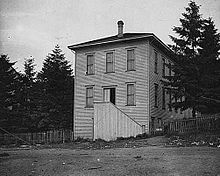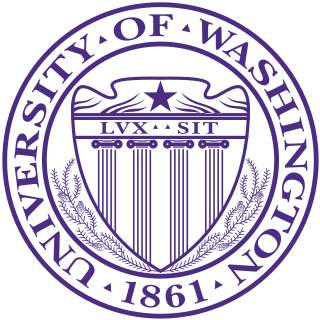
The University of Washington is a public research university in Seattle, Washington. Founded in 1861, approximately a decade after the founding of Seattle, the University of Washington is one of the oldest universities on the West Coast of the United States.

The Century 21 Exposition was a world's fair held April 21, 1962, to October 21, 1962, in Seattle, Washington, United States. Nearly 10 million people attended the fair during its six-month run.

The Field Museum of Natural History (FMNH), also known as The Field Museum, is a natural history museum in Chicago, Illinois, and is one of the largest such museums in the world. The museum is popular for the size and quality of its educational and scientific programs, and its extensive scientific specimen and artifact collections. The permanent exhibitions, which attract up to 2 million visitors annually, include fossils, current cultures from around the world, and interactive programming demonstrating today's urgent conservation needs. The museum is named in honor of its first major benefactor, Marshall Field, the department-store magnate. The museum and its collections originated from the 1893 World's Columbian Exposition and the artifacts displayed at the fair.

The American Museum of Natural History (AMNH) is a natural history museum on the Upper West Side of Manhattan in New York City. Located in Theodore Roosevelt Park, across the street from Central Park, the museum complex comprises 20 interconnected buildings housing 45 permanent exhibition halls, in addition to a planetarium and a library. The museum collections contain about 35 million specimens of plants, animals, fungi, fossils, minerals, rocks, meteorites, human remains, and human cultural artifacts, as well as specialized collections for frozen tissue and genomic and astrophysical data, of which only a small fraction can be displayed at any given time. The museum occupies more than 2,500,000 sq ft (232,258 m2). AMNH has a full-time scientific staff of 225, sponsors over 120 special field expeditions each year, and averages about five million visits annually.

The Canadian Museum of Nature is a national natural history museum based in Canada's National Capital Region. The museum's exhibitions and public programs are housed in the Victoria Memorial Museum Building, a 18,910-square-metre structure (203,500 sq ft) in Ottawa, Ontario. The museum's administrative offices and scientific centres are housed at a separate location, the Natural Heritage Campus, in Gatineau, Quebec.

The National Museum of Natural History (NMNH) is a natural history museum administered by the Smithsonian Institution, located on the National Mall in Washington, D.C., United States. It has free admission and is open 364 days a year. with 4.4 million visitors in 2023, it was the most-visited museum in the United States.
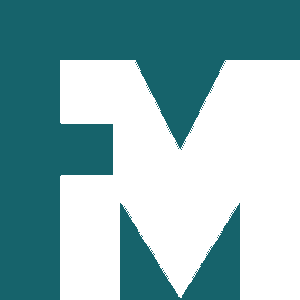
The Florida Museum of Natural History (FLMNH) is Florida's official state-sponsored and chartered natural history museum. Its main facilities are located at 3215 Hull Road on the campus of the University of Florida in Gainesville.

The University of Kansas Natural History Museum is part of the University of Kansas Biodiversity Institute, a KU designated research center dedicated to the study of the life of the planet.
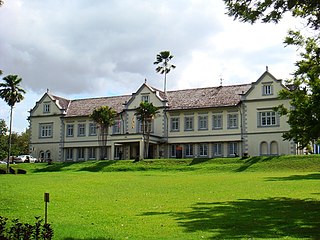
The Sarawak State Museum is the oldest museum in Borneo. It was founded in 1888 and opened in 1891 in a purpose-built building in Kuching, Sarawak.

The San Diego Natural History Museum is a museum located in Balboa Park in San Diego, California. It was founded in 1874 as the San Diego Society of Natural History. It is the second oldest scientific institution west of the Mississippi and the oldest in Southern California. The present location of the museum was dedicated on January 14, 1933. A major addition to the museum was dedicated in April 2001, doubling exhibit space.
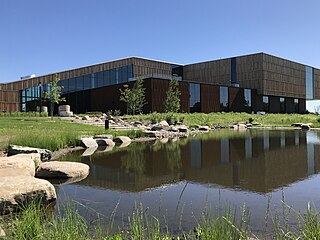
The Bell Museum, formerly known as the James Ford Bell Museum of Natural History, is located at the University of Minnesota's Saint Paul campus. The museum's current location on the Saint Paul campus opened in 2018. The Minnesota wildlife dioramas showcase animal specimens from around the world. The museum also houses the digital Whitney and Elizabeth MacMillan Planetarium. The museum is part of the university's College of Food, Agricultural and Natural Resource Sciences. The museum's former location on University of Minnesota's Minneapolis campus closed in January 2017.

The University of Oregon Museum of Natural and Cultural History is a natural history museum of the University of Oregon, in Eugene, Oregon, United States. The museum headquarters and public spaces are located at 1680 East 15th Avenue in a building inspired by the design of Pacific Northwest Native longhouses.
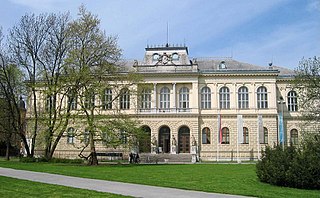
The Slovenian Museum of Natural History is a Slovenian national museum with natural history, scientific, and educational contents. It is the oldest cultural and scientific Slovenian institution.

The University of Iowa Museum of Natural History is a natural history museum on the University of Iowa campus in Iowa City, Iowa. The museum was founded in 1858 by instruction of the Iowa General Assembly as the Cabinet of Natural History. It is housed within Macbride Hall, located in the Pentacrest area of the university campus. The museum's collections contain around 140,000 objects, including approximately 31,000 birds, eggs, and nests, 5,000 mammal specimens, 41,000 insects, 44,000 other invertebrates, 6,000 archaeological specimens, and historical documents and images from the museum's history. The museum includes several galleries on Iowa's geological and cultural history, biological diversity, and environmental science, spanning four floors. Major research collections include the Kallam Collection of prehistoric stone tools, the Talbot and Jones Bird Collections, the Frank Russell Collection of Inuit and Native Arctic artifacts, and the Philippine Collection of ethnographic materials from the 1904 World's Fair.

The University of Michigan Museum of Natural History (UMMNH) is a natural history museum of the University of Michigan in Ann Arbor, Michigan, United States.

Wesley Conrad Wehr was an American paleontologist and artist best known for his studies of Cenozoic fossil floras in western North America, the Stonerose Interpretive Center, and as a part of the Northwest School of art. Wehr published two books with University of Washington Press that chronicled his friendships with artists and scientists.
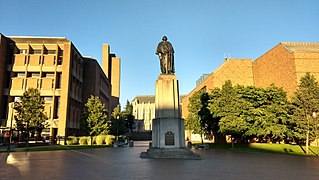
The Campus of the University of Washington is located in the University District of Seattle. Campus buildings are categorized by the major street or vicinity on which they are located on campus. In 2011, Slate magazine and Travel+Leisure described the Seattle campus as one of the most beautiful university campuses in the United States.

Corylopsis reedae is an extinct species of flowering plant in the family Hamamelidaceae known from fossil leaves found in the early Eocene Klondike Mountain Formation deposits of northern Washington state. C. readae is one of the oldest occurrences of the winter-hazel genus Corylopsis, which includes between seven and thirty species, all found in Asia. Fossils from two other occurrences are of similar age to C. readae, with Paleocene specimens from Greenland being placed in the form taxon Corylopsiphyllum and an Eocene Alaskan fossil being included in Corylopsis without species placement.



